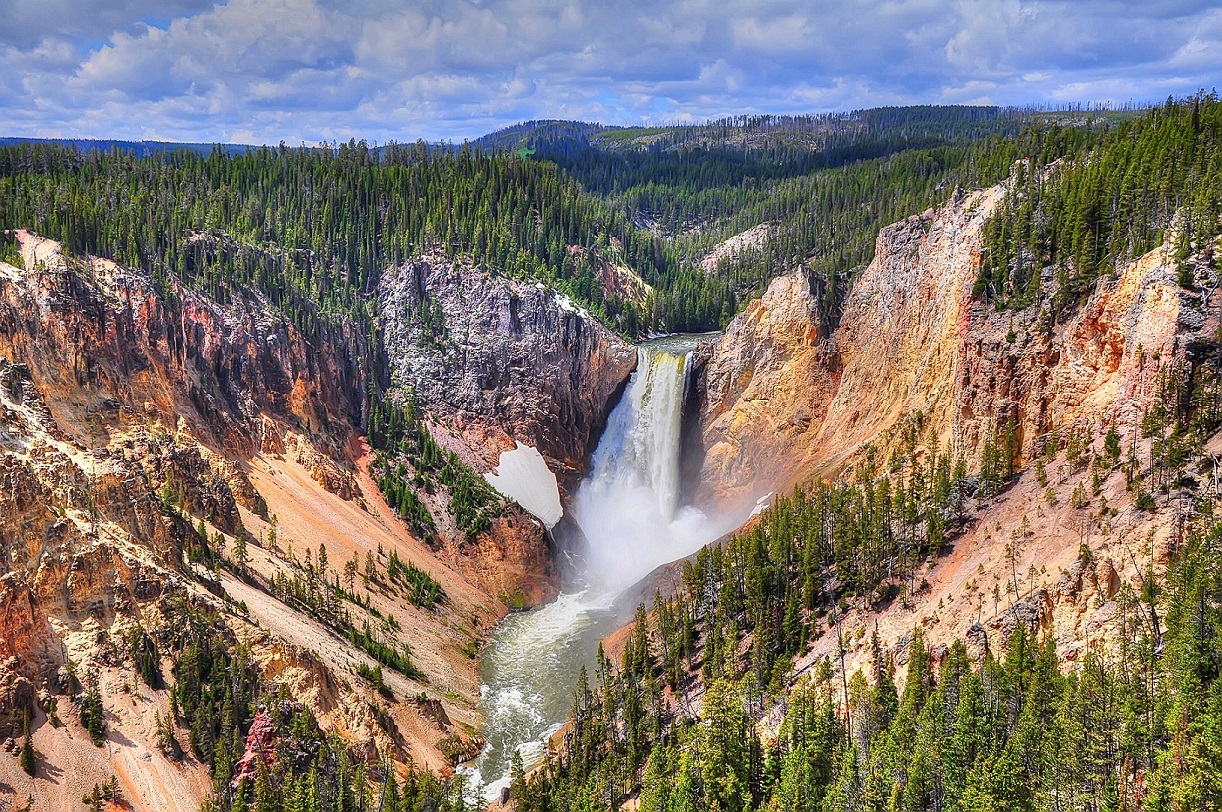Throwback Thursday: From the Vault
The Grand Canyon of Yellowstone National Park. Photo courtesy of Brook Ward.
“Our needs are astronomic,” remarked president of the National Park Foundation Will Shafroth. “The parks don’t have enough money to accomplish their goals.” As our National Park Service celebrates its 100th birthday, it faces a nearly $12 billion maintenance backlog.
In an attempt to raise funds for national parks, the park service is providing corporate donors greater recognition, even selling some naming rights. The park service will not use advertising or marketing slogans to recognize donors, but, for the first time, donors may be recognized with temporary naming rights to some park buildings or have their logos discretely added to temporary signage, printed materials, interpretive exhibits, and digital media. Companies will also be allowed to earmark gifts for recurring park expenses, which was previously prohibited.
Do not fear – Half Dome will not be sporting golden arches. Jeff Reinbold, the National Park Service’s assistant director for partnerships and civic engagement, stated, “Donor recognition cannot state or imply naming rights to any park in the National Park system or any National Park Service facility, historic structure, or feature. Donor recognition cannot incorporate advertising, a marketing slogan or tagline.” In addition, credit lines and corporate logos of donors would not be on any fixed items. “The great thing about the policy is it protects those features of the park that are important to all of us,” said Reinbold, “but it gives us new opportunities and new tools.”
The idea of selling naming rights may seem radical, but it’s actually an idea born of decades of brainstorming about how to better fund out national parks. Twenty years ago, PERC scholars were highlighting the challenges faced by NPS managers who were tasked with preserving lands while meeting tourism demands. Managers struggled to financially support national parks and the ecology of the parks was deteriorating. In 1999, Terry Anderson, Vernon Smith, and Emily Simmons wrote a Cato Policy Analysis detailing how “both environmental quality and economic efficiency would be enhanced by private rather than public ownership”:
Public land management, however, does not always deliver what the citizens expect either for the treasury or for the environment. It is remarkable that the federal government actually loses money in the course of managing federal land assets estimated to be worth billions. Moreover, the federal government has a poor record of ecological stewardship.
National parks generate the largest losses of all federal lands…. In 1994 only two national park units, Montezuma Castle Monument in Arizona and Arches National Park in Utah, made a profit.
[T]he information available strongly suggests that the federal government has been a less than competent ecological manager. As Hope Babcock, a former official at the National Audubon Society and currently a law professor at Georgetown University, acknowledges, ‘Few would assert that the historical institutional paradigm for managing the nation’s public lands has protected the natural resource values of those lands or provided a harmonious framework for resolving conflicts over their use. Unless a dramatic change in the federalism structure for the management of public lands is made, the conflict over their use and management will continue to blight the future of these lands, just as it has marred their past.’
Given the economic and environmental costs of operating the federal estate, the time has come to reconsider proposals for privatization that were considered in the 1980s. Private ownership offers an alternative to business as usual in Washington by getting the incentives right for both the treasury and the environment.
The most radical idea of completely divesting the national parks is a political non-starter, but more palatable ideas have emerged based on Anderson, Smith, and Simmons’s concepts. For example, Holly Fretwell has proposed the idea of a National Park franchise. Rather than adding to the federal estate, proponents of a new national park unit could apply for a National Park Service franchise. To qualify, the franchisees would have to present park management plans that meet NPS standards and objectives. Only then could they earn NPS status, the terms of which would be enforceable under contract, trademark, and franchise laws.
Allowing corporate logos or granting naming rights in national parks in exchange for large donations is one approach to harnessing market powers to preserve our parks. Our parks are in trouble and need new management tools. If that means Patagonia’s logo goes on a wall in a visitor’s center in exchange for the funding to fix the leaky plumbing pumping sewage into national park waterways, perhaps the environmental benefits outweigh the cost of allowing logos in national parks. After all, we already have corporate logos in national parks – Yellowstone drivers already fill up at Sinclair gas pumps – so why not create a system in which national parks financially benefit from the presence of logos and can invest the proceeds in environmental conservation?

Yellowstone National Park, one of the crown jewels of the park system, has benefited from corporate dollars. Companies such as Toyota and ConocoPhillips provided funding for the restoration of native fisheries, reconstructed trails and overlooks, wildlife health, and the reintroduction of wolves. Corporations also supplied the funding and expertise to build sustainable facilities in the park. Without outside help, the park could not have afforded to address these crucial needs.
Ideas that help parks be self-reliant while still protecting valuable landscapes, such as franchising and selling naming rights, should be encouraged. Let’s give the managers of our crown jewels the tools to help themselves. As the National Park Service moves into its second century, it is time to think outside the box.




